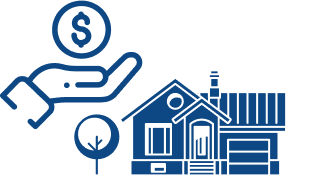Working from home has opened the gate for migration, mainly from the coastal cities to the inland. Sun Belt states saw the most significant population growth, and it is reflected in the prices in their metro areas. When the pandemic first started, Sun Belt cities such as Phoenix and Tampa attracted homebuyers with lower-priced housing markets and affordable living standards. It seems like much has changed, especially in the last 12 months.
Redfin published a report detailing how much the housing demand increased home prices. Additionally, the report calculates how much money homebuyers have to earn to afford today’s monthly mortgage payments. According to Redfin, the housing market is considered affordable if the median monthly mortgage payment does not exceed 30% of the median monthly income.
Highest Inflation Rates in the States
The Sun Belt states’ economy is booming. Major metros are seeing undeniable employment growth and median salary has grown in most places, but there are negative sides to this. The most obvious one is the inflation hitting the Sun Belt the hardest.
Metro areas with the highest inflation rates align with Sun Belt cities that saw the biggest influx of people in the last two years. Phoenix has the highest increase in the consumer price index with a yearly growth of 10.9%. Moreover, Arizona’s capital is the second most popular relocation city, next to Miami, which is number one on that list.
Affordable housing is lacking in Atlanta as well, where the price index rose by 10.6% - this city is in the top ten most popular migration destinations. Georgia and Coastal Carolina are popular for East Coast migrants, while Texas and Arizona saw an influx of East Coast residents.
New residents are challenging the locals, whose economic environment changed drastically in the last two years. The cost of living is rising in the whole country, but migration to the Sun Belt makes this part of the county severely vulnerable to price increases.
Buyers Need 34% More Income to Afford Homeownership
According to Redfin’s report, in order for a median house to become affordable, homebuyers in the US need to earn at least $76,000 a year. This income should sustain the median monthly mortgage payment, which rose to $1,900.
The income necessary to afford a home has increased much more than the hourly wage, which is 5.6% higher than a year ago. These are average numbers that represent the national housing market.
However, these numbers are much higher when looking at local housing markets, San Francisco being the first on the list of “necessary salary increases for affordable housing”. Residents in 14 out of 50 major metros need to earn six figures to afford homeownership.
Domestic migration created such high housing demand, but the effect of it transcends just the housing market. There are urbanism problems due to population growth, rent growth is pushing the locals out of the Sun Belt metro areas, and the new residents are raising the overall cost of living.
Homebuyers who are considering relocating due to affordability can find it in Detroit, Cleveland, Pittsburgh, and St Louis. The Sun Belt states are no longer on that list, especially Texas, North Carolina, Arizona, and Florida.
SELL
YOUR HOUSE
If you want to sell fast and are worried about how long the traditional process takes, and the commission and fees involved, consider working with SleeveUp Homes.





 view all blogs by this author
view all blogs by this author Zachariah Peterson (69 blogs)
Zachariah Peterson (69 blogs)